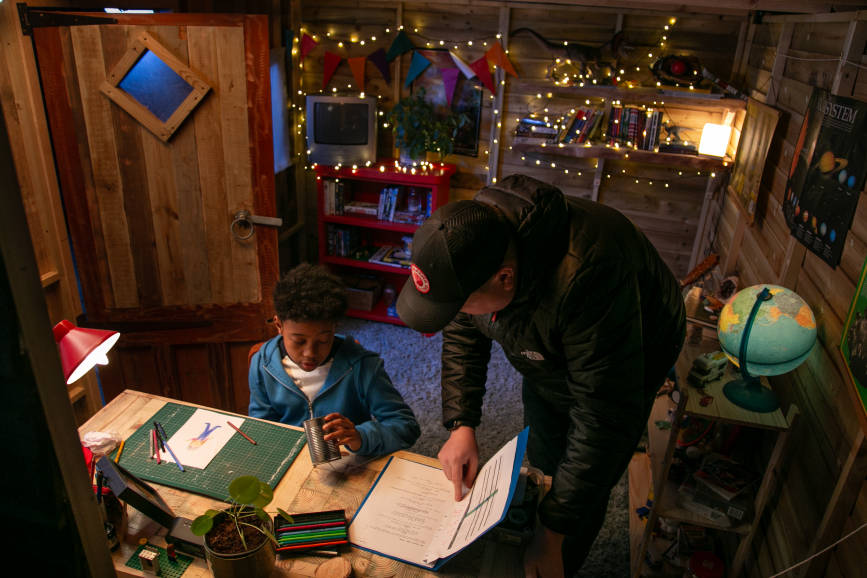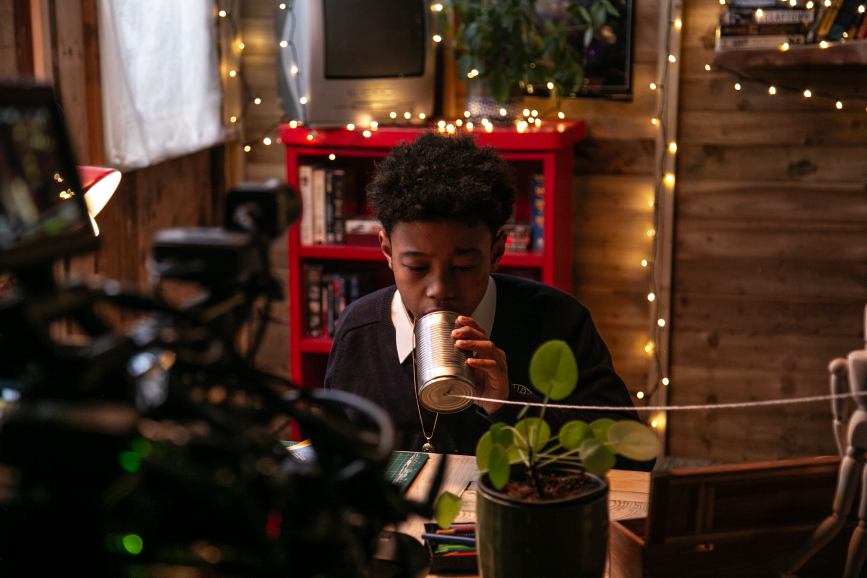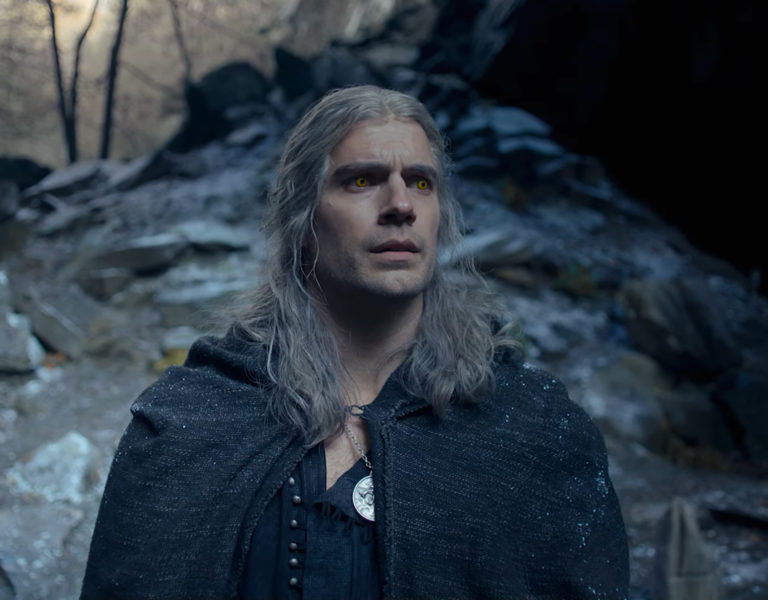Young minds
The Boy in the Shed tells a powerful narrative of children’s mental health and bereavement. The director and DP of the short film discuss the challenges of working with child actors on a tight budget and limited time.
In contemporary society, there’s a noticeable shift towards recognising and prioritising children and young people’s mental health. Unlike in the past, where these concerns were often dismissed, today’s evolving attitudes emphasise the need for comprehensive support systems. COVID-19 further highlighted this issue, with reports suggesting a significant number of children haven’t returned to school due to closures and social isolation.
Advocacy movements and destigmatisation efforts have dismantled taboos surrounding mental health discussions, empowering young individuals to seek assistance. This hasn’t been lost on director Ben Wicks, whose new 25-minute short film The Boy In The Shed, a Shoreditch Pictures and Window Zebra Productions co-production, is a thought-provoking featurette that centres around children’s mental health and bereavement. Eddie, a young boy grappling with mental health, struggles to come to terms with the sudden death of his father. He meets Summer, the new girl, who teaches him to talk about his feelings, allowing him to deal with loss, bullying, and loneliness in a world he feels no longer his own.
“I’ve always been fascinated by how children cope with so-called ‘adult issues’,” Wicks explains. “A recent short of mine, Snapshot, focused on how a child came to terms with his grandfather’s diagnosis of Alzheimer’s. Alistair (Bathgate), my co-writer, and I wanted to put a child back into those ‘adult issues’ and, after both going through bereavements ourselves and watching how our younger siblings also struggled to cope, we started to write the character of Eddie, and The Boy in The Shed was born. It is crucial for me to showcase the effects mental health has on a young boy who tries to communicate his feelings over bereavement. I do not want to shy away from showcasing bereavement on camera and will ensure that this is a visceral project with raw emotion at its heart.”

Dominic Howlett, DP on the film, explains how the story about a boy “seeing the world differently” informed his camera and lens choices. “The film’s protagonist, Eddie, not only experiences life through the eyes of a child but is also having to suddenly come to terms with a world that no longer includes his father,” he explains. “This is why it was important for Ben and me to find a way of visually capturing this perspective on camera. After extensive lens testing, we decided on an old set of Iron Glass vintage lenses as we loved the odd idiosyncrasies created by the lens distortion and strange shaped flares. For the camera, we used an old RED Epic to enhance this vintage feel we had created with the Iron Glass Lenses.”
Shot on location in London and Hampshire, when it came to the lighting setups, the “Shed” and the “Hospital” sets, Howlett tried to use as many practical lights as possible. “In the hospital, we made use of the LED tubes that had been built into the set to act as our Key, we then supplemented these with a series of Aputure 300d Mk IIs to act as daylight coming through the windows,” he adds. “For the Shed, we used practical LED fairy lights to create a homely feel. These were then supported by Astera Titan tubes that were built into the roof of the set, with ARRI SkyPanels placed by the set windows. These Sky Panels could then be adjusted to simulate day or night.”

GO WITH THE FLOW
Wicks and Howlett decided to shoot several scenes in The Boy in the Shed in one continuous take, as the narrative flows from present to past and then back to the present. This created its own challenges, such as costume changes and lighting gags, to achieve a seamless transition between moments in the characters’ timelines. “These scenes were heavily choreographed between the actors and the camera team and would often require at least half a day to complete,” Howlett continues. “Ben worked closely with all of the different departments to ensure he was able to capture the exact timings and movements he was after. And I worked closely with the gaffer, Chris Hosker, to program the DMX lighting cues to highlight key moments.”
Despite the temptation to use VFX, the team used very little in the film. “Originally, we had the ending of the film panning up to the sky to see a shooting star as if our lead character’s father was looking down on him,” adds Howlett. “When I pitched this idea to producers, they weren’t sold and felt it was a bit on the nose. That mixed with a very tight budget meant that we couldn’t really afford to pay for more advanced VFX. Having said that, we produced this really cool shot where our main character walks from outside to inside the shed, and the camera seamlessly feels as if it’s going through the wall of the shed. We shot the interior and exterior at different locations and spent 19 takes getting the pace and motion of the camera spot on to stitch together in post, with the help of a little VFX, to make the shot perfect!”

LESSONS LEARNT
Often on shoots, the biggest learning curve is usually technology, creative, or logistical. However, on this film, it was ensuring shots were as planned as they could be prior to shooting because of the very strict licensing rules and hours when filming with children. The lead actors who were both pre-teenagers were only available for a maximum of five hours shooting time per day. “This meant that Dom and I had to plan everything as meticulously as possible to avoid wasting time on the day,” adds Wicks. “That said, we of course had time to be creative on the day and find those spontaneous unscripted moments which was down to the fantastic scheduling of my first assistant director, Chris Davis.”
Fortunately, Wicks had shot several films with children as the lead, so he was used to the regulated hours. However, those projects were brief shorts (maximum three-day shoots), whereas The Boy In The Shed was a 12-day shoot with children in every day. “As in everyday life, children get easily bored, so I was conscious to not overload the days with lots of dramatic scenes and in between takes and setups we kept the set very light-hearted with games,” he says. “The child cast was so good and ultra-professional! They’d actually put some adult cast I’ve worked with in the past to shame. Not mentioning any names, of course.”
The Boy In the Shed is currently embarking on its festival run. Updates about its journey can be followed on the Instagram handle @tbitsfilm.












